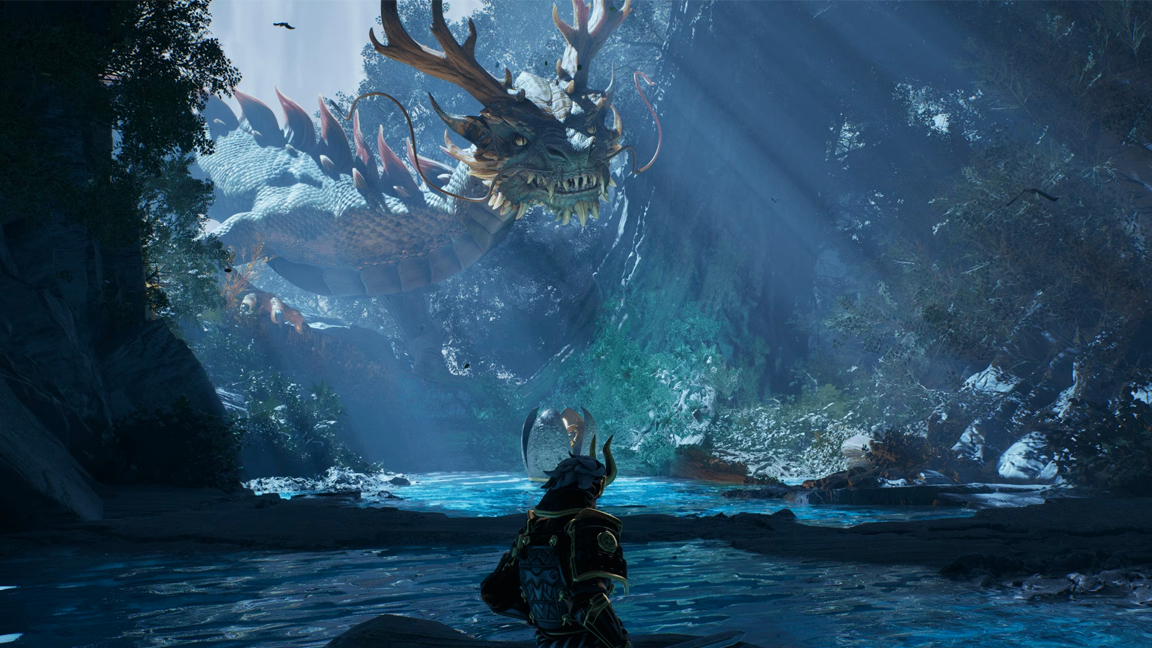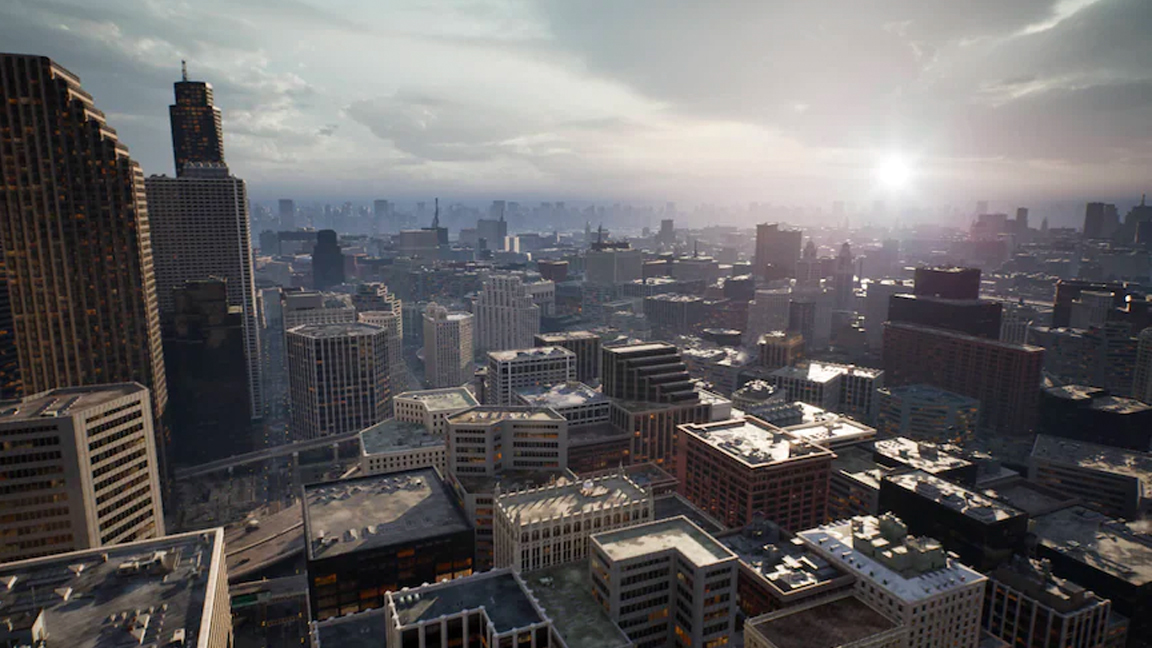Unreal Engine and Unity: why you need to learn a game engine
Unreal Engine and Unity use is on the rise in all areas of art; why and how to learn a game engine.

Unreal Engine and Unity are becoming the art software to master in 2023. The worldwide demand for Unreal Engine skills was projected to grow 138% over 10 years, according to insight from labour market analytics firm Burning Glass in 2021. The company mined their database of nearly a billion past and present job postings to discover that demand for Unreal Engine skills is growing faster than any other segment in real-time 3D.
These job market stats show what everyone in the industry is feeling: a clear shift from traditional workflows and applications to real-time game engines such as Unreal Engine and Unity. Companies all around the world are seeking new ways to deliver more immersive and interactive experiences to clients, and it’s contributing to one of the biggest shifts the industry has witnessed in a long time.
If you're new to game engines, read our Unreal Engine 5.3 review that details what this platform can do. You should also read our RoboCop: Rogue City review where we detail how UE5 has impressed. The details of the 2021 Burning Glass report can be read on the Unreal blog.
Unreal Engine and Unity: the future is real-time

Traditional workflows within the 3D industry for the past couple of decades could be summarised as centring around a modelling application followed by a rendering engine, which would either be a plugin or standalone program. I, for example, have spent most of my career working with 3ds Max as my modelling tool and V-Ray as my rendering plugin.
This combination has enabled artists to create breathtaking images and videos but has, in recent years, begun to lack the necessary firepower for an upsurge of interactive and real-time workflows, whether used for pre-visualisation, in-project modelling and simulation, or for rendering and creating experiences for end users.
These seismic shifts will cause a whole host of different thoughts and feelings to rise up in the mind and heart of a 3D artist. Those who are comfortable with a traditional workflow and find it hard to pick up new software will see it particularly difficult to adapt to this changing landscape. On the other hand, 3D artists who can shift their workflows and pick up new tools will find themselves much more successful in future-proofing their skills.
In this article I’ll discuss why artists should make the move and offer practical advice for making the transition. Exploring this new world might seem daunting, but if you have time to give it a whirl, you won’t be disappointed. (Read our interview with Natasha Tatarchuk, vice president of Unity Wētā Tools, who shares how this platform aims to help onboard new artists.)
Daily design news, reviews, how-tos and more, as picked by the editors.
Speeding up a workflow with Unreal Engine 5

There are a wide range of reasons for moving away from traditional workflows, but I’ll focus here on areas of efficiency, cost, and deliverables. Game engines, at their core, deliver real-time interactive results. Offline processing and rendering is not so important as it is in traditional workflows. Take Unity’s Enemies demo for example. The hero woman features an incredible real-time hair solution that includes authoring, importing, simulating, and rendering strand-based hair.
One of the main areas that efficiency is of the essence is with pre-visualisation. Results must be delivered as fast as possible with artists responding quickly to last-minute changes.
For artists to thrive in this environment, they need tools that will deliver instant feedback, and game engine platforms do exactly that. It’s possible to see the result of lighting changes in a matter of seconds. Materials can be swapped in and out without needing to wait for rendering, and ideas can be explored and quickly discarded or accepted. (In our sit down with game developer Hexworks we discovered how Unreal Engine 5 has changed environment creation in Lords of the Fallen.)
Unreal Engine and Unity: what's the cost?

The two major players, Unreal Engine and Unity, both offer competitive pricing plans compared to the majority of traditional applications. An Unreal Engine Standard License is free with a five per cent royalty due only if an off-the-shelf game exceeds gross revenue of more than $1million. Unity also has a personal license for free with the Plus version coming out at only €369 (£320/$400) per year. (Read our guide to Unity versus Unreal Engine for a deeper comparison.)
Considering both 3ds Max and Maya cost £1,968 annually, it’s no wonder these engines are drawing attention. There are of course free applications, with the most well-known being Blender, but compared to the majority, Unreal Engine and Unity come in favourably. This means artists can maximise profits and minimise financial risk when committing to a career in the industry.

One of the greatest strengths of this new wave of DCCs (digital content creators) is the wide range of deliverables that can be created out of them. It’s not only possible to natively create games, films, images, and short videos, but it's also possible to natively generate less standard outputs, such as augmented reality (AR) experiences.
This is evidenced in Unity’s dedicated AR tools, which are ready to go straight out of the box. This includes a purpose-built framework, Mars tools, and an XR Interaction Toolkit. The fact these tools are at your fingertips means artists can create one scene, but then create a wide variety of outputs.
A common example is in the world of film and games where artists can create a film within a game engine, and then much more easily convert that into a game without having to build it again from scratch. (Our interview with director Tim Richardson posed question, 'Is Unreal Engine the future of filmmaking?')
Advice for getting started in Unreal Engine and Unity

Before we get into some of the tips and tricks that will make living in a game engine world much easier, it’s important you set off in the right direction, and that requires choosing the right tool. There are others, but two of the main players are Unreal Engine and Unity.
Unity is perfect for 2D and 3D gaming, especially for a mobile output. Unreal Engine is arguably more difficult to learn, compared to Unity, but certainly delivers if you’re interested in building large and complex games or scenes. It’s possible to try both, but it’ll be worth your time if you’re able to do some research up front.
Once you’ve made your decision, make sure you start out simple. Don’t go all hell for leather with your most complex model and lighting setup. Create a simple scene with a basic model, some simple lights and basic materials.
Try replicating your traditional workflow inside the game engine and see how it responds. This will help you orient yourself inside a new environment. Over time you can adapt and adjust your workflow to better suit the tools, but for now keep things familiar.
Another great starting point would be to use one of the free out-of-the-box scenes that these game engines have made available. Unity created an incredible demo scene called Enemies, which contains a range of cutting-edge technologies that are relatively new to the engine. Unreal Engine, similarly, contains sample scenes including the likes of Stack’O’Bot and the Lyra Starter Game.
Game engines, what you need to know

When transitioning from a traditional workflow to a real-time engine, you’ll need to consider the complexity of your scene carefully. Offline rendering and simulations allow for a greater degree of complexity to be processed, which is simply not possible in real-time. You’ll have to keep this in mind when you’re building your scenes.
Part of this will be including detail in meshes, materials and lights where required, but these engines also include a range of features to help performance. A couple of examples include Impact Checkpoints for lighting, shadowing and post-processing, and Lightmass and Cull Distance Volumes that are used to define calculation boundaries.
It’s amazing how similar lighting workflows have now become across both traditional tools and game engines. The latter used to rely heavily upon creating baked solutions for shadows, lights and reflections, but are now increasingly adopting fully fledged dynamic global illumination and reflection solutions. And these aren’t second-rate solutions; they are able to compete even with some of the best offline rendering options. The fact that traditional 3D artists will be used to these solutions will make the move across far simpler.
Lumen, in Unreal Engine, is an example of this. It renders diffuse interreflection with infinite bounces and indirect specular reflections in large, detailed environments at scales ranging from millimetres to kilometres. This means the lighting, shadows and reflections respond to whatever interactions take place within the scene. An example of Lumen can be seen in the Unreal Engine 5 remake of horror game Layers of Fear.
Not having to author lightmap UVs or wait for lightmaps to bake will ensure a smooth transition across. Unity’s High Definition Render Pipeline (HDRP) is similar in that it gives artists the tools they need to create an incredibly high standard of animations, demos and games.
Online training to learn a game engine

As with most software, there are some excellent resources on YouTube, as well as dedicated course websites such as Udemy and Skillshare. A quick browse of these sites will give you a feel for what’s on offer. Finding a series of tutorials rather than one-offs will serve you best, especially if you’re completely new.
Aside from the above, both Unreal Engine and Unity provide their own in-house training, which is excellent. Unreal Engine provides specific tutorials depending on which industry you want to focus on, including film and TV, games, architecture, and visualisation. Each tutorial has a table of contents that makes it easy to follow along and track your progress.
Unity takes this a step further by providing a way to track progress, earn badges, bookmark content and get personalised recommendations. This is all done across over 750 hours of free live and on-demand learning content for a range of experience levels. They also provide professional-certified training delivered by qualified trainers. This type of training ensures a high level of quality and interactivity.
So, as you can see, while the future of 3D art is heading towards a real-time, game-engine enabled workflow, it's not too daunting to switch to or to compliment your existing way of working. You may even find you need a less powerful computer than the rendering workstation you've come to use, take a look at our guide to the best laptops for game development, and the best laptops for 3D modelling for ideas.
This content originally appeared in 3D World magazine. Subscribe to 3D World at Magazines Direct.

Paul is a digital expert. In the 20 years since he graduated with a first-class honours degree in Computer Science, Paul has been actively involved in a variety of different tech and creative industries that make him the go-to guy for reviews, opinion pieces, and featured articles. With a particular love of all things visual, including photography, videography, and 3D visualisation Paul is never far from a camera or other piece of tech that gets his creative juices going. You'll also find his writing in other places, including Creative Bloq, Digital Camera World, and 3D World Magazine.
- Ian DeanEditor, Digital Arts & 3D
